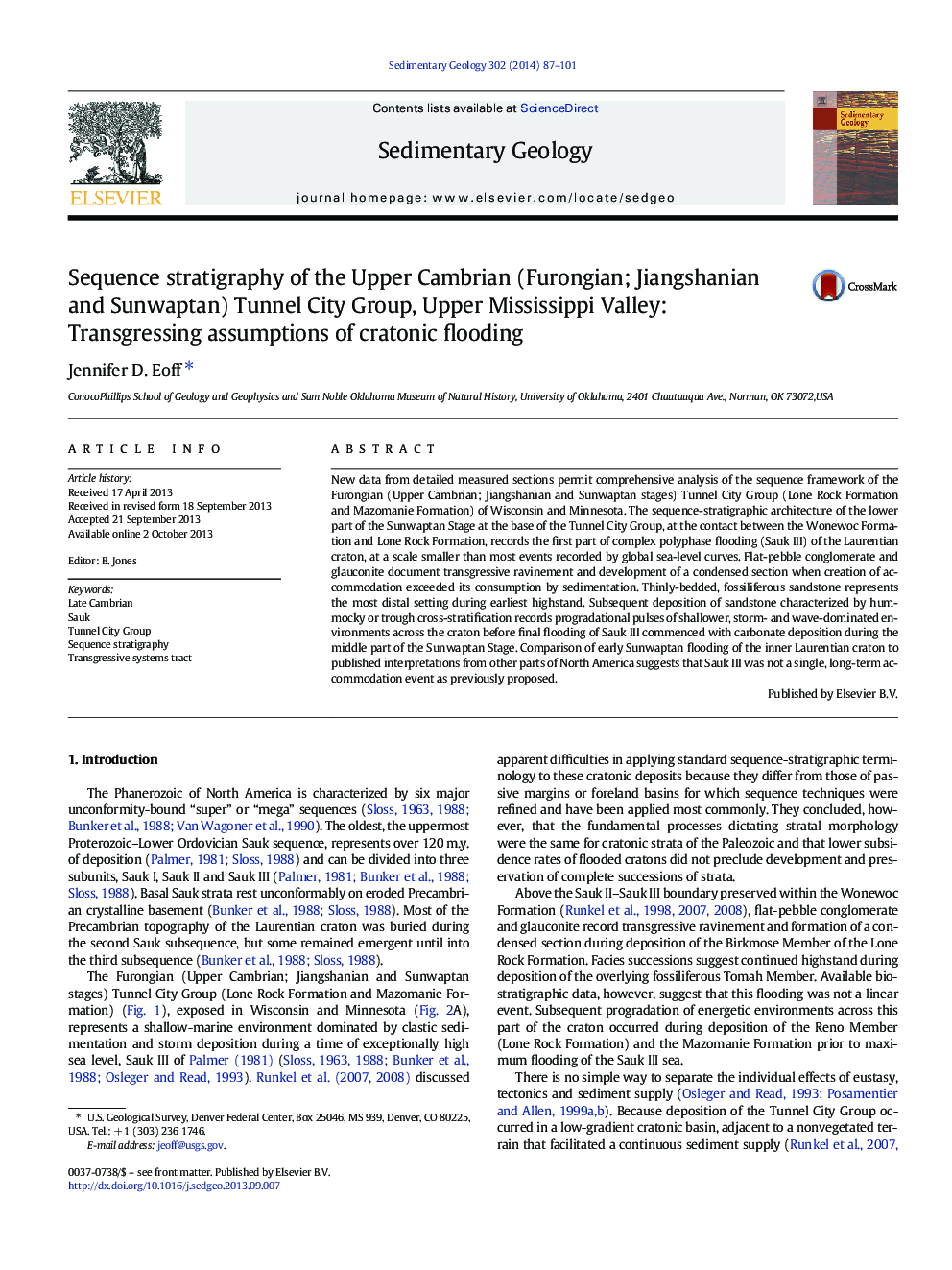| Article ID | Journal | Published Year | Pages | File Type |
|---|---|---|---|---|
| 4689460 | Sedimentary Geology | 2014 | 15 Pages |
New data from detailed measured sections permit comprehensive analysis of the sequence framework of the Furongian (Upper Cambrian; Jiangshanian and Sunwaptan stages) Tunnel City Group (Lone Rock Formation and Mazomanie Formation) of Wisconsin and Minnesota. The sequence-stratigraphic architecture of the lower part of the Sunwaptan Stage at the base of the Tunnel City Group, at the contact between the Wonewoc Formation and Lone Rock Formation, records the first part of complex polyphase flooding (Sauk III) of the Laurentian craton, at a scale smaller than most events recorded by global sea-level curves. Flat-pebble conglomerate and glauconite document transgressive ravinement and development of a condensed section when creation of accommodation exceeded its consumption by sedimentation. Thinly-bedded, fossiliferous sandstone represents the most distal setting during earliest highstand. Subsequent deposition of sandstone characterized by hummocky or trough cross-stratification records progradational pulses of shallower, storm- and wave-dominated environments across the craton before final flooding of Sauk III commenced with carbonate deposition during the middle part of the Sunwaptan Stage. Comparison of early Sunwaptan flooding of the inner Laurentian craton to published interpretations from other parts of North America suggests that Sauk III was not a single, long-term accommodation event as previously proposed.
